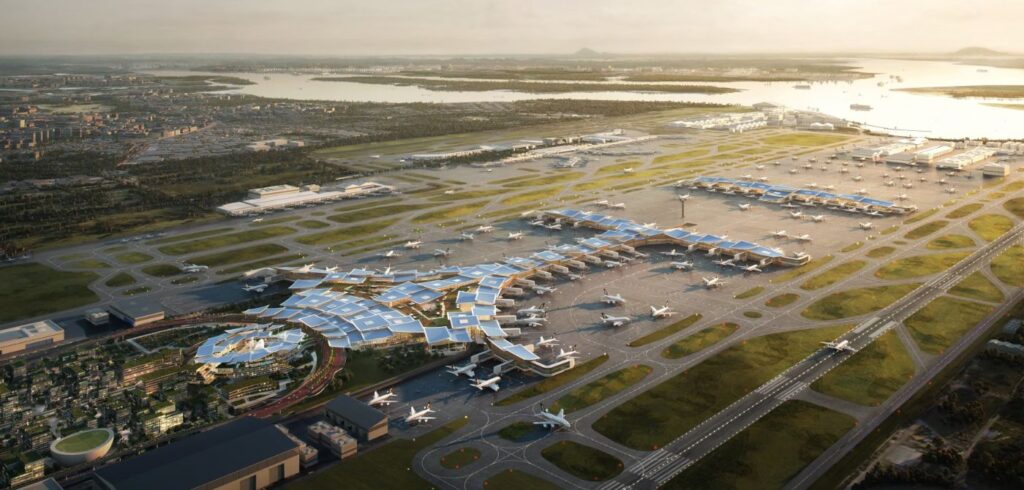Following a two-year hiatus due to the Covid-19 pandemic, work on the T5 project at Changi Airport in Singapore has resumed – with an updated modular design and enhanced resilience and sustainability.
Construction is expected to commence around 2024, for T5 to be operational around the mid-2030s. The terminal will be located within the 1,080ha Changi East development, which has a similar land area to the current Changi Airport. It will be designed to handle about 50 million passengers per year and have the flexibility to be built in two phases, in line with traffic growth. This additional capacity from T5 is intended to strengthen Changi Airport’s position as an air hub for the region and beyond.
Drawing on lessons learned from the Covid-19 pandemic, T5 will be designed with the flexibility to operate as smaller sub-terminals when needed, with space that could be converted for use during contingencies, such as for testing operations or the segregation of high-risk passengers. Specialized provisions to reduce the transmission of diseases will also be deployed in T5. This includes contactless systems at passenger touchpoints, as well as enhanced ventilation systems that can be activated during a pandemic to increase the use of fresh air and minimize the mixing of air.
The terminal is intended to be a Green Mark Platinum Super Low Energy Building as certified by the Building and Construction Authority. To reduce the carbon footprint of T5, solar panels, smart building management systems and district cooling combined with thermal energy storage will be deployed in the terminal building. T5 will also be ready for viable alternative fuels including the use of sustainable aviation fuel, and for the provision of fixed ground power and cooling for aircraft parked at the gates.
It will also use technology to automate and digitalize airport operations, to improve the passenger experience and increase manpower productivity. For example, T5 could see the deployment of autonomous vehicles to support baggage and cargo transportation on the airside and robotics for baggage handling. The terminal will be designed to accommodate and facilitate the deployment of such technology at scale. These efforts will provide the airport’s local enterprises with an opportunity to build capabilities in new areas such as robotics and artificial intelligence, and ultimately create jobs for Singaporeans within the airport ecosystem.
To connect T5 to the rest of Singapore, the terminal will have a dedicated ground transportation center where passengers can access rail, bus and other point-to-point transportation services. The industrial area Changi East Urban District (CEUD) will also be on its doorstep; planning for the CEUD will be done in consultation with the Ministry of National Development, the Urban Redevelopment Authority and other agencies.
First announced in 2013, Changi Airport’s Terminal 5 (T5) is a project undertaken by the Ministry of Transport (MOT), the Civil Aviation Authority of Singapore (CAAS) and Changi Airport Group (CAG). Following Singapore’s reopening after the Covid-19 pandemic, Changi Airport has reported a strong recovery in air travel demand in the long term. In particular, the International Air Transport Association (IATA) has projected that Asia-Pacific would be a fast-growing region for air travel over the next two decades.

